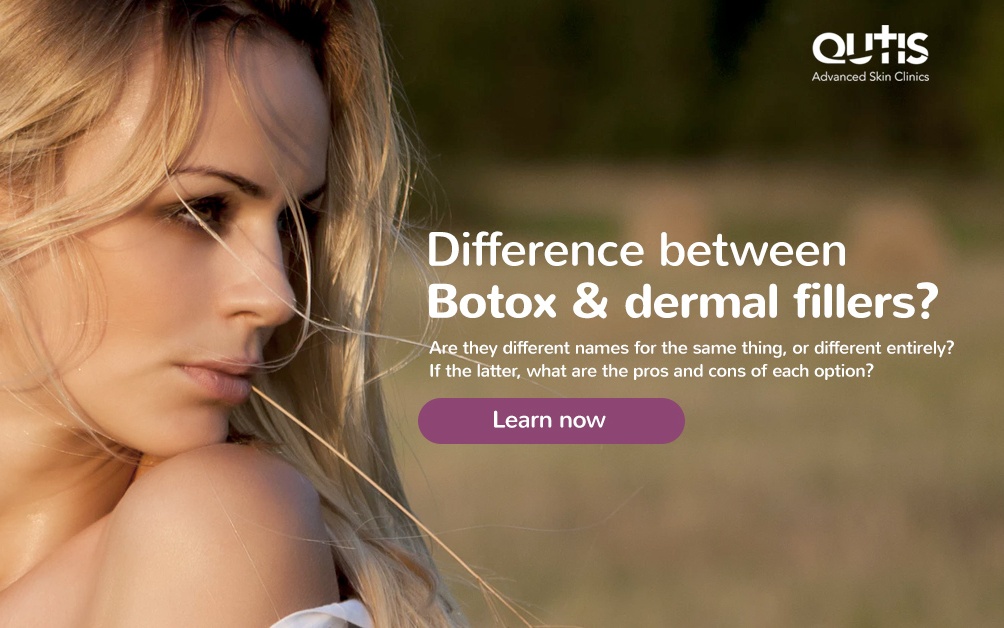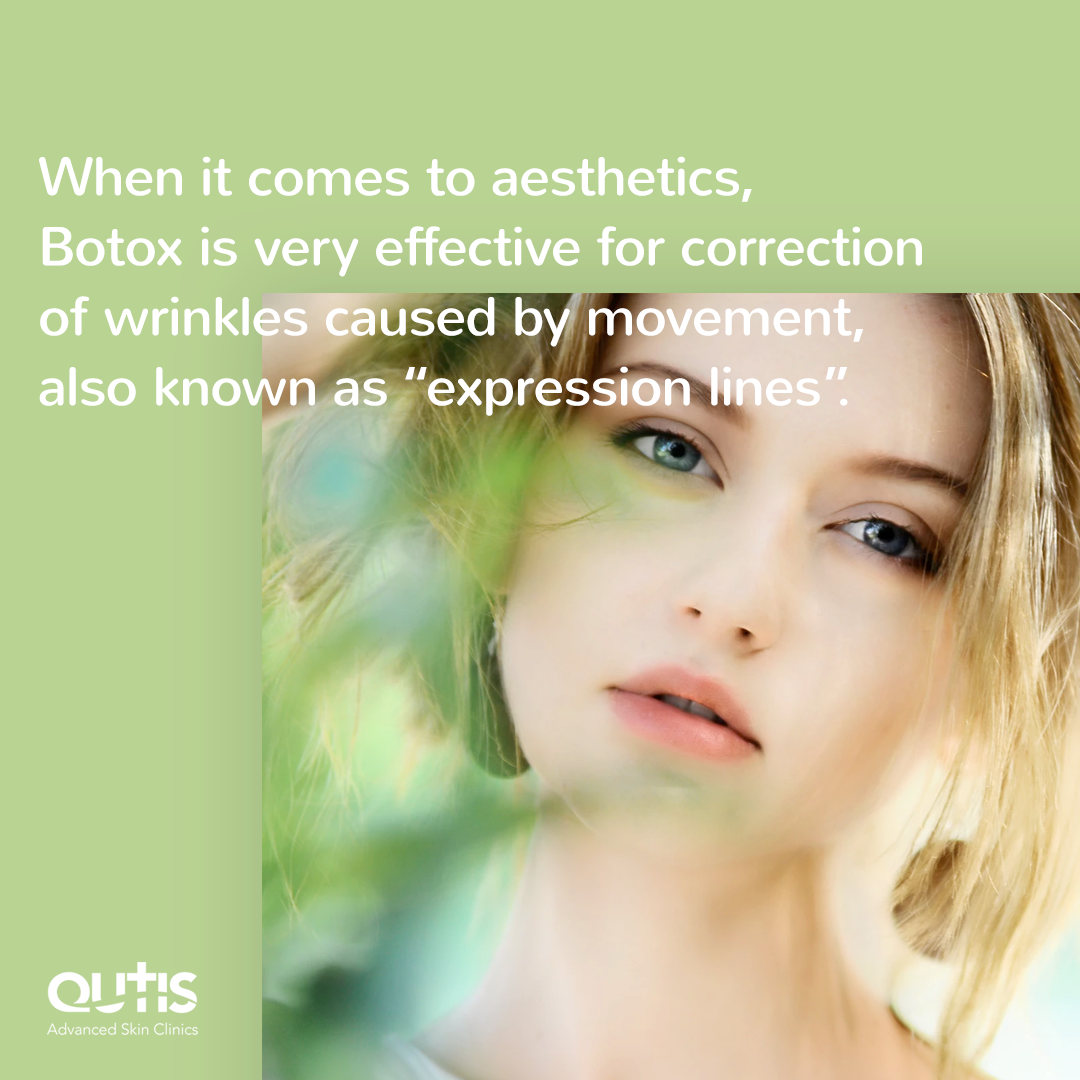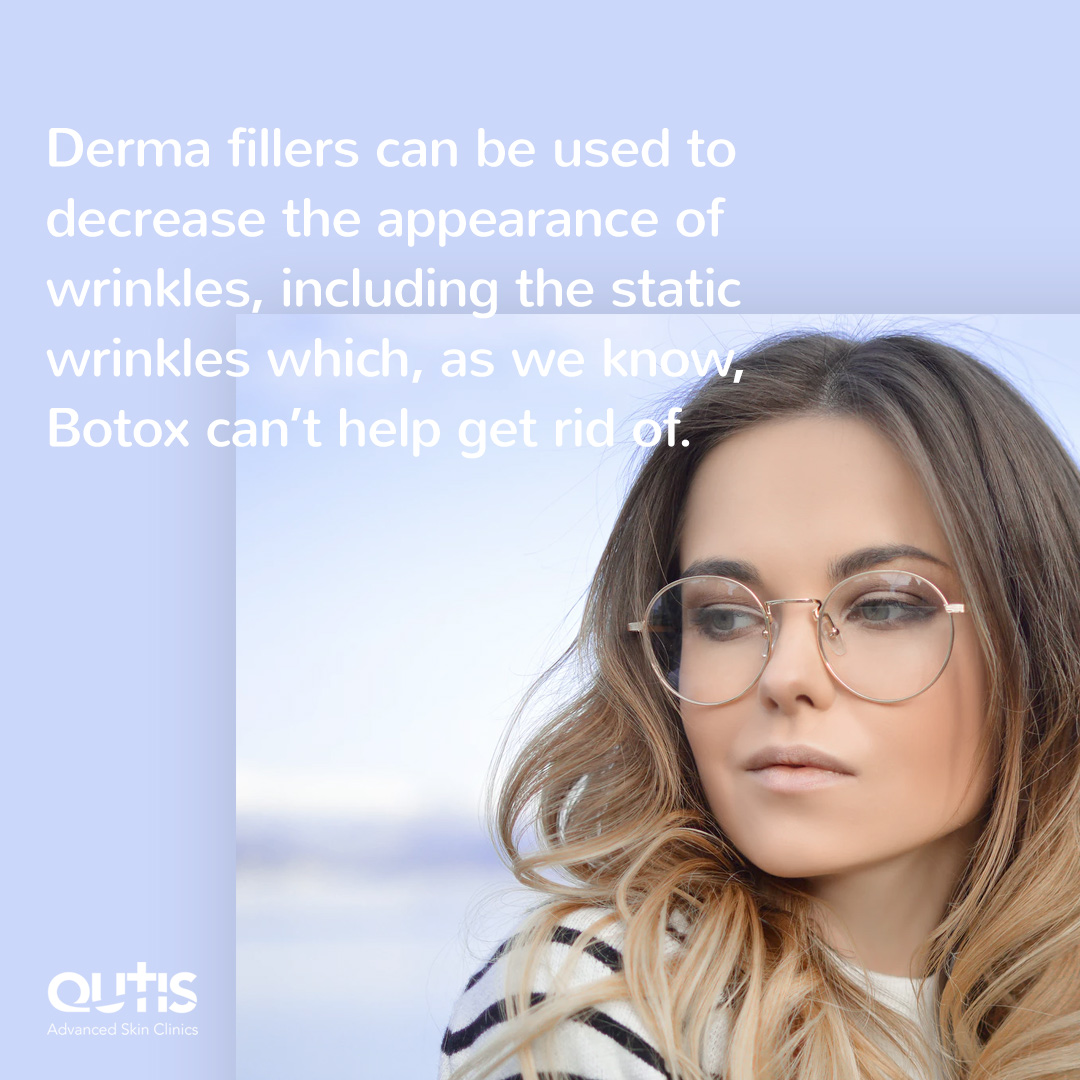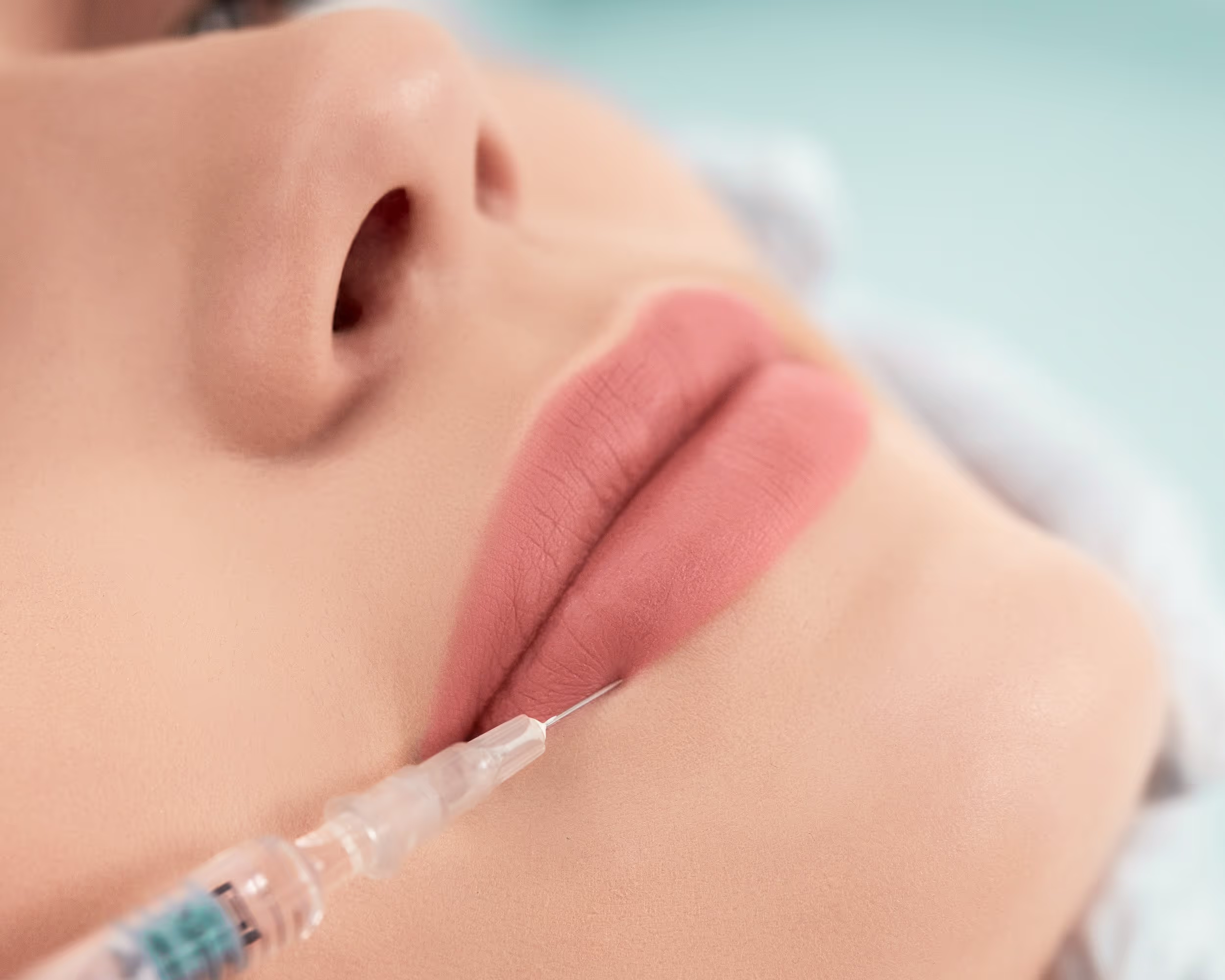What Is The Difference Between Muscle Relaxant & Dermal Fillers

According to the American Society of Plastic Surgeons (ASPS), muscle relaxing injections and dermal fillers are peaking in popularity, with over 9 million procedures performed each year. This is not surprising, considering both effective cosmetic treatments are relatively affordable and do not require surgery. Instead, they are administered through injections in specialised clinics, as well as by private qualified practitioners.
As both procedures can be used to reduce visible signs of ageing (think fine lines and saggy skin), it leads to a certain degree of confusion. Are they different names for the same thing, or different entirely? If the latter, what are the pros and cons of each option?
If those questions are puzzling you, we highly recommend reading this article thoroughly! This guide to injectables will explain everything you need to know about Anti wrinkle treatments and fillers, helping you make an informed decision.

What is Botox?
You may be surprised to discover that Botox is made with botulinum toxin. Essentially, it’s a neurotoxic protein that is produced by the bacterium Clostridium botulinum and several other related species. It causes muscle paralysis by chemically disrupting neurotransmission.
Of course, when exposed to it uncontrollably, one is likely to experience nothing but big trouble. However, today botulinum toxin is tamed by scientists, and there are four distinct formulations of it approved for medical and cosmetic use by the U.S. Food and Drug Administration (FDA), with new formulations constantly being tested and investigated (A. Carruthers et al., 2013).
Essentially, those “tame” botulinum toxin preparations, such as Botox (one of the most popular botulinum toxin type A products), work by relaxing specific muscles temporarily. The effects eventually wear off, meaning repeated procedures are required every few months to maintain the desired results.
What can Botox correct?
Botox and other similar preparations are used in both aesthetic medicine (J. Carruthers et al., 2013) and to treat certain conditions (Yun et al., 2015).
When it comes to aesthetics, Botox is very effective for the correction of wrinkles caused by movement, also known as “expression lines”. Frown lines, crow’s feet and horizontal forehead lines all can be successfully targeted by Botox and its counterparts. Other types of lines that can be treated with botulotoxin include those that were created by laughing, squinting, smiling, and otherwise expressing emotions by moving the muscles.
Unfortunately, if the lines are caused by sagging of the skin, which simply makes them more visible, Botox won’t be able to address the issue. Typical areas where such stubborn wrinkles form include neck and cheeks. For these, alternative treatments must be sought to avoid disappointment.
Medical uses of Botox and other botulinum toxin preparations are also emerging, giving hope to patients with excessive sweating (An, Hyun Won, Si Han, Park, & Seo, 2015), migraines (Aurora et al., 2014), cluster headaches (Bratbak et al., 2016), overactive bladder (Sun, Luo, Tang, Yang, & Shen, 2015), and more.
Botox side effects and considerations
Generally, botulinum toxin injections are considered very safe – that is, when administered by a qualified professional. In addition, the effects of Botox wear off eventually, which means that if something did go wrong, it will resolve itself over the course of a few months.
The most commonly reported side effects are headaches, pain and flu-like symptoms. Those typically go away in a matter of hours of days, but if they don’t, it’s advisable to seek a medical opinion.
In rare cases, when the solution hasn’t been administered properly, wrong muscles get targeted, which may result in side effects such as eyelid drooping. It’s important to know that the latter, also known as ptosis, only happens in 5% cases overall, and even less so when the person performing the procedure is highly experienced.

What are dermal fillers?
Dermal fillers come under many names, including but not limited to injectable implants and wrinkle fillers. They are listed by the FDA under a broad category of medical device implants.
Most frequently used dermal fillers are based on hyaluronic acid – a substance that naturally occurs in our body, making those fillers very biocompatible. In other words, they are extremely unlikely to get rejected, and if that happens, it’s usually due to other contents of the formulation, not the main ingredient.
Normal function of hyaluronic acid in the body is binding water, so it acts like a lubricant and creates protective cushion for many body parts such as joints (Liu et al., 2018). In addition, hyaluronic acid participates in complex metabolic processes such as nutrient transport and regulating skin hydration (Galimberti, Guida, Pellacani, & Bencini, 2018).
When injected under the skin, hyaluronic acid immediately draws water into the area, evening out the surface and creating a more youthful, plump appearance.
There are also other types of fillers available, such as polylactic acid (which stimulates collagen production), calcium hydroxyapatite (a mineral-like substance), and a few others. Each filler, if prescribed correctly, can help achieve amazing results.
Filler injections are temporary, since the body simply reabsorbs the filler in a matter of months. Unlike Botox injections, you can also get rid of unwanted fillers almost instantly by getting an injection of a special enzyme. No regrets!
What can dermal fillers correct?
Due to their amazing ability to hydrate and plump the skin, dermal fillers are typically used for purposes such as reversible lip augmentation, enhancing certain facial features such as cheekbones and chin, and non-surgical rhinoplasty. Fillers can also be used to decrease the appearance of wrinkles, including the static wrinkles which, as we know, Botox can’t help get rid of.

Dermal filler risks and considerations
When administered by a professional, getting dermal fillers are generally a safe procedure. However, it does come with certain risks (Keizers et al., 2018).
Common, and usually transient, side effects include bruising, swelling, pain, tenderness, itching, and irritation.
More serious complications include raised bumps that may require surgery, open wounds, infections, allergies and permanent tissue damage. Those are rare and require prompt medical attention.
Key differences
- Botox is an injectable botulinum toxin preparation acting as a muscle relaxant
- Dermal fillers are injectable gels used to add volume
Takeaway
Whether you want to enhance your appearance or solve a certain medical issue, when used appropriately, both Botox and dermal fillers can be very effective. It’s important to have realistic expectations of what each treatment can achieve and find an experienced professional to perform a procedure, and then you’re likely to be happy with the result.
References
An, J. S., Hyun Won, C., Si Han, J., Park, H. S., & Seo, K. K. (2015). Comparison of onabotulinumtoxinA and rimabotulinumtoxinB for the treatment of axillary hyperhidrosis. Dermatol Surg, 41(8), 960-967. doi:10.1097/dss.0000000000000429
Aurora, S. K., Dodick, D. W., Diener, H. C., DeGryse, R. E., Turkel, C. C., Lipton, R. B., & Silberstein, S. D. (2014). OnabotulinumtoxinA for chronic migraine: efficacy, safety, and tolerability in patients who received all five treatment cycles in the PREEMPT clinical program. Acta Neurol Scand, 129(1), 61-70. doi:10.1111/ane.12171
Bratbak, D. F., Nordgard, S., Stovner, L. J., Linde, M., Folvik, M., Bugten, V., & Tronvik, E. (2016). Pilot study of sphenopalatine injection of onabotulinumtoxinA for the treatment of intractable chronic cluster headache. Cephalalgia, 36(6), 503-509. doi:10.1177/0333102415597891
Carruthers, A., Kane, M. A., Flynn, T. C., Huang, P., Kim, S. D., Solish, N., & Kaeuper, G. (2013). The convergence of medicine and neurotoxins: a focus on botulinum toxin type A and its application in aesthetic medicine--a global, evidence-based botulinum toxin consensus education initiative: part I: botulinum toxin in clinical and cosmetic practice. Dermatol Surg, 39(3 Pt 2), 493-509. doi:10.1111/dsu.12147
Carruthers, J., Fournier, N., Kerscher, M., Ruiz-Avila, J., Trindade de Almeida, A. R., & Kaeuper, G. (2013). The convergence of medicine and neurotoxins: a focus on botulinum toxin type A and its application in aesthetic medicine--a global, evidence-based botulinum toxin consensus education initiative: part II: incorporating botulinum toxin into aesthetic clinical practice. Dermatol Surg, 39(3 Pt 2), 510-525. doi:10.1111/dsu.12148
Galimberti, M. G., Guida, S., Pellacani, G., & Bencini, P. L. (2018). Hyaluronic acid filler for skin rejuvenation: The role of diet on outcomes. A pilot study. Dermatol Ther, e12646. doi:10.1111/dth.12646
Keizers, P. H. J., Vanhee, C., van den Elzen, E. M. W., de Jong, W. H., Venhuis, B. J., Hodemaekers, H. M., . . . Lensen, D. G. W. (2018). A high crosslinking grade of hyaluronic acid found in a dermal filler causing adverse effects. J Pharm Biomed Anal, 159, 173-178. doi:10.1016/j.jpba.2018.06.066
Liu, S. H., Dube, C. E., Eaton, C. B., Driban, J. B., McAlindon, T. E., & Lapane, K. L. (2018). Longterm Effectiveness of Intraarticular Injections on Patient- reported Symptoms in Knee Osteoarthritis. J Rheumatol. doi:10.3899/jrheum.171385
Sun, Y., Luo, D., Tang, C., Yang, L., & Shen, H. (2015). The safety and efficiency of onabotulinumtoxinA for the treatment of overactive bladder: a systematic review and meta-analysis. Int Urol Nephrol, 47(11), 1779-1788. doi:10.1007/s11255-015-1125-7
Yun, J. Y., Kim, J. W., Kim, H. T., Chung, S. J., Kim, J. M., Cho, J. W., . . . Jeon, B. S. (2015). Muscle relaxant at a ratio of 2.5:1 units in cervical dystonia: a double-blind, randomized study. Mov Disord, 30(2), 206-213. doi:10.1002/mds.26085
Our Most Popular Treatments

Anti Wrinkle Treatment
Rediscover your youthful radiance with our Anti-Wrinkle Treatment. This safe, effective solution smooths fine lines and wrinkles, helping you look as vibrant as you feel.

HydraFacial ®
Transform your skin with HydraFacial® MD, a multi-step treatment tailored to all skin types. This advanced facial cleanses, exfoliates, and hydrates, delivering instant radiance and lasting results.

Dermal Fillers
Restore your youthful glow with our Dermal Fillers, expertly crafted to smooth wrinkles and enhance facial volume. This advanced treatment rejuvenates lips, cheeks, and more, delivering a natural, radiant look.

The Next Generation Of Medical Aesthetic Clinics


